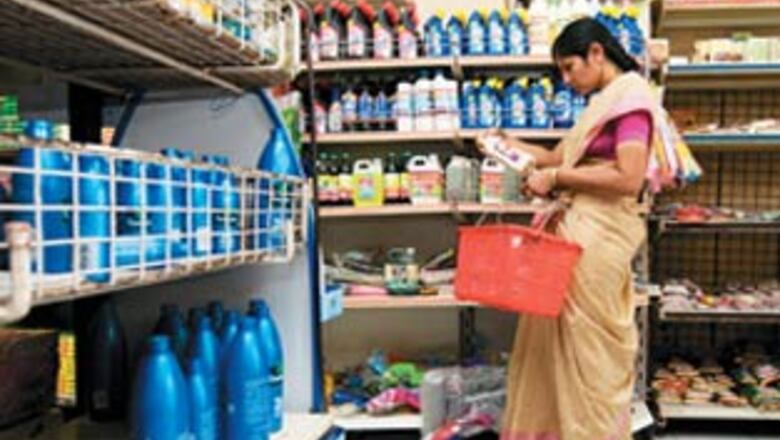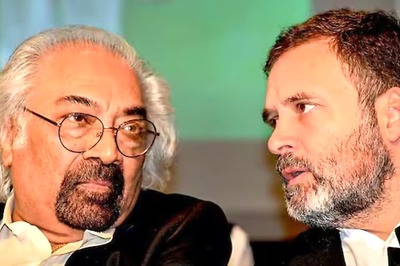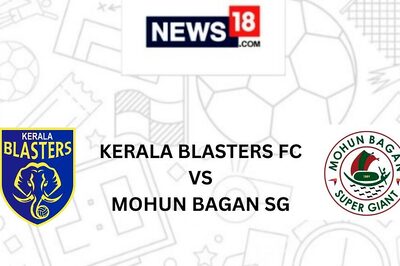
views
The Indian markets took a severe beating last year. Valuation benchmarks were so distorted that even penny stocks began to look respectable in comparison. So how do you get the juice and avoid the dregs?
Remember that the financial crisis, like Swine flu, came from foreign shores. So avoid stocks with global linkages, mostly. Go for companies that feed off domestic demand.
Thus, the prospects for automobile companies may look better if they continue to get access to cheap raw material. But that may not be the case for metal and oil suppliers, who still suffer the overhang of poor prices globally. We think four themes act as superb filters to get to the cream. Within these four themes, we have picked companies that have high return on capital employed, profit and revenue growth along with a strong connection to the domestic market. This is by no means an exhaustive list. In our judgment, the companies we’ve selected exemplify the kind of plays investors will benefit from. There may well be several other stocks among the 4,000-odd listed companies that could qualify to be selected under each of these categories.
Our list is designed to offer a variety of opportunities for both the long-term value investor as well as those with a slightly higher risk appetite.
The Consumer Play
Between 2000 and 2005, nearly a third of the incremental expenditure came from the middle class. Their non-food expenditure rose 70 per cent, while expenditure on education doubled. In these years, as per capita income rose 80 per cent, Indians also increased their expenses by nearly the same degree. The same theme will play out in the coming years. The five broad areas to look for companies are: food, essential non-food, education, healthcare (lifestyle) and discretionary expenditure that will include consumer durables and automobiles.
Strategy: Buy it, stash it and have a good night’s sleep.
Page Industries: A small company that makes a small product with big margins: male underwear. This Rs. 200-crore company makes the Jockey brand and has a net margin of 12 per cent and ROCE of 36 per cent. The company has effectively positioned its brand in a largely unbranded and unorganised Rs. 900 crore innerwear market. The company is worth a little over $100 million — cheap to even buy as an ongoing business for global competitors.
Pidilite Industries: Pidilite has brands like Fevicol, M-Seal, car polish Motomax and other assorted consumer art materials and specialised home paints. The three brands are also clear market leaders in their category. The company is available at a market capitalisation of 1.6 times its sales. With a sales growth rate of more than 22 per cent for the last five years, there is a lot of steam left as its brands touch fast-growing areas like education, home décor and automobiles.
Dabur: This company has focus. Five years ago, Dabur got out of the pharmaceutical business and put all its effort, like the best brand companies, behind five of its brands. Since then, its ROCE has consistently remained above 50 per cent. It touched 80 per cent in 2008. Dabur strategy of focusing on health foods like fruit juices sold under its Real brand is starting to pay dividends.
Procter and Gamble Hygiene: Over the last three years, the money that P&G invested did not translate into market cap gains. The worm has now turned. Its feminine hygiene line, Whisper, grew at 21 per cent and is also the category leader in value terms. Its ROCE, which started dipping since 2006, has again picked up indicating that its new investments are now paying dividends. The stock is trading at its three years highs but is still priced 20 per cent below its peers.
Marico: Till 2008-09 came by, the company’s sales and profits had grown for 30 consecutive quarters, indicating a stable track record. Over the last five years, the company averaged a 20 per cent growth in sales and profits. It recently launched its Saffola range of food products, which is expected to give the company its next round of growth. The stock looks fully priced but its international business and Kaya Skin Clinics have started to deliver returns. Analysts expect these businesses to expand rapidly in the coming years.
Risk: People love this sector when the chips are down. But when bulls are roaming the streets, returns from this sector fall. These stocks have higher valuations than the general market, making them look expensive.

PAGE_BREAK
The Infrastructure Play
India needs new roads, ports, airports, railway lines and huge amounts of power. Apart from steel and cement, there are several ancillary plays as well. For instance, warehouse network will be needed along the roads and near ports. As more small towns get connected to big cities through roads, vehicle sales will benefit.
Strategy: Not good for paying school fees; great for college education kitty.
Blue Star: Two decades to reach Rs. 1,000 crore in sales; two years to reach Rs. 2,000 crore in 2008. Non-core businesses are gone and 90 per cent of revenues come from refrigeration and cooling products. It’s almost debt-free with an ROCE of over 50 per cent. Growing demand for cold storage, outsourcing outfits and other commercial offices in Tier II cities put the estimated non-residential demand for air conditioning at Rs. 38,000 crore.
BHEL: For 2009-10, the company is increasing its capacity from 10 GW to 15 GW. Capacity additions are ahead of schedule. The slowdown in the global economy has brought down input costs significantly. The company has also taken control of its salary costs that were eroding its profit margins. BHEL will be among the top beneficiaries as India begins to add 20,000 MW of generation capacity each year for the next five years.
Power Finance Corporation: At about 25 per cent, the company’s net profit margin is close to what the best software companies earn at half their price-to-earnings ratio. This public sector company also enjoys the preferred lender status for all the mega power projects in the country. Its employee expenses are just 1 per cent of sales.
Mahindra & Mahindra: Rural India is earning well because of infrastructure boom. M&M’s SUVs are selling briskly and its market share in the SUV space has gone from 51 per cent to 57 per cent in the last two years. A week after Xylo was launched, M&M received 9,000 bookings, or one-fifth of its annual SUV sales. The stock may be fully priced now but the upshot comes from prosperity in the hinterland that better infrastructure will bring.
Allcargo Global Logistics: This stock was one of the earliest to recover after it fell dramatically in October. It has already recovered all the lost ground as the company managed to keep its net profits margin above 15 per cent. The stock is available at a P/E of 17 on trailing earnings, just as expensive as the broad market. Allcargo, a complete logistics provider, is positioned well to exploit the projected 17 per cent in port traffic and the increasing trend of outsourcing of logistics by manufacturing companies.
Risk: Long payback periods are par for the course in infrastructure. As a result, earnings in the near term could be depressed, often in proportion to the borrowed funds. If costs of funds go up, returns could diminish. In some cases, regulatory glitches can also slow down the process as is the case with mega power plants coming up in Uttar Pradesh.

PAGE_BREAK
The Liberalisation Play
Government moves out, lets in private capital, it works more efficiently and delivers great returns. That’s liberalisation. The new government has the mandate to open up sectors like banking, insurance, retail and airlines to private investors. When it does, be there.
Strategy: Simply select the best performers in these sectors.
Crisil: The 800-pound gorilla of rating agencies, it rates 1,000 firms today. If the financial sector is liberalised, that number could go up to 10,000. Crisil has retained earnings of 75 per cent with an ROCE of 42 per cent. It is the fourth largest credit rating agency in the world.
ICRA: There is room for both Crisil and ICRA in the space. At Rs. 788, the company is getting close to its 52-week high of Rs. 900. But the number doesn’t capture the potential arising from RBI’s new rule that all debt products be rated.
HDFC Bank: A cautious and solid bank, it is safe because its government bond holdings are 3 per cent over the statutory liquidity ratio (SLR) requirement.Fiscal liberalisation will benefit this bank because it is in a position to scale up quickly. At Rs. 1,569, the price looks steep based on 2009-10 P/E multiple of 4. This is very much the stock for those who like conservative growth.
Kingfisher Airlines: The company has a debt-equity ratio of 3:1. And it makes losses. If foreign capital is allowed, you can be sure of one thing: Vijay Mallya will make sure Kingfisher gets it. That will make life a lot easier for the airline.
Oracle Financial: It suffered when foreign banks went broke. But its earnings jumped 77 per cent and revenues rose 23 per cent in 2008-09. As its clients come off the ventilator, they will need to be rewired. Oracle Financial will be waiting.
Risk: The ambiguity of regulatory changes, however, gives them some additional risk. Given that US banks have behaved so badly, it is going to be hard for government to liberalise the financial sector.

PAGE_BREAK
The Vulture Play
These stocks have fallen like there’s no bottom. But the levels at which they are trading offer huge opportunities.
Strategy: Buy on rumours and sell on news.
Suzlon: Debt is high and so are the receivables. But Tulsi Tanti is willing to dilute his stake and meet commitments. If US President Barack Obama backs energy generation from green sources, Suzlon’s 5 MW wind turbines will be hot. The stock has gained nearly 300 per cent since the time it fell to Rs. 35.
Ranbaxy: The last 12 months have been bad. Sales are down, research hasn’t paid off and US FDA is after it for manufacturing lapses. But the new Japanese owner Daiichi Sankyo has had great successes in research and working with the FDA. Expect them to put Ranbaxy back on an even keel.
NIIT: As IT crashed so did the IT trainer. Its stock fell 85 per cent to Rs. 14. But it is moving beyond IT and is training professionals for banking jobs. The amount spent on education doubled in the last five years and NIIT grew twice as fast, quadrupling its top line. The stock has recovered to half its 52-week high.
Wockhardt: Its core business is in fine fettle. Its problems are foreign loan repayments and derivative losses. Banks are taking over the company operations and Habil Khorakiwala has put some businesses on the block to pay off debtors. Wockhardt’s strong cash flow should return it to good health in two years.
Hindalco: The acquisition of Novelis tripled Hindalco’s sales but caused an 11 per cent decline in net profits. But aluminum prices are rising and credit is beginning to flow. Hindalco’s nine-month profits look nice. It now has the space to fix Novelis. Tricky but not impossible.
Risk: This one’s clearly a high risk strategy. There could be serious heart ache before the gains come.

Find this article in Forbes India Magazine of 03 July, 2009



















Comments
0 comment